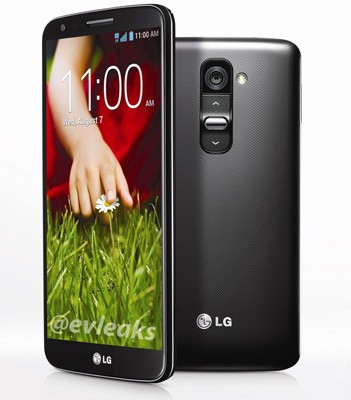The new device, sporting a Qualcomm 2.26GHz quad-core processor, 13MP optical image stabilization camera, a 3,000mAh battery and a large 5.2-inch high-definition IPS display, is an attempt to pull LG back into the race that for so long now has been dominated by the likes of Apple and Samsung.
LG Mobile CEO Jong-Soek Park introduced the G2 at a New York event on Wednesday, telling attendees that the phone marked the start of a new philosophy for the South Korean company.
“Technology without empathy can no longer be considered innovation,” he said.
|
|
The new philosophy has manifested with the G2 in relocating the power and volume buttons to the back, something not seen before in smartphones.
"Think about it-- where is your index finger when you are talking on the phone?" Park said. "Relocating power and volume buttons to the back ... changes the way we interact with the form. Simply everything is more convenient."

Another key selling point is the processor. The G2 will ship with the first worldwide smartphone use of the Snapdragon 800 processor, according to Steve Mollenkopf, President of Qualcomm.
The 800 processor boasts 75% better performance than the S4 Pro processor used in the LG Optimus G, the G2's predecessor, and has four core processors, each clocked at 2.3 GHz, up from 1.7 GHz per core in the LG Optimus G.
LG said that the new rear button posed a design challenge to the size of the battery, but the company is managed to squeeze in a 3,000 mAh battery compared to the standard of around 2,000 mAh.
The phone also comes equipped with a 13-megapixel rear-facing camera, along with a 2.1-megapixel front camera. Meanwhile the 5.2-inch display has 1,920 x 1080 pixels, and the phone will come in two internal storage models: 16 GB and 32 GB, with no expansion slot.
During the presentation LG said the G2 also features an "outstanding user experience", with users being able to answer the phone by simply saying "answer me", and can turn the phone off and on by tapping the screen twice.
The phone runs Android 4.2.2 and is housed in a plastic casing, at a time where phones like the HTC One are opting for metal.
Analysts have lauded what they're calling a "risky" move from LG.
"It's different, which is saying something, when so many devices, especially the ones running Android, all seem to look the same," said Ovum analyst Jan Dawson. "But it's risky in a flagship."
"The huge difference between Samsung and LG in the U.S. is that when you talk to normal people about Samsung, they'll mention the Galaxy brand, but when you talk to them about LG they'll talk about TVs and refrigerators."
Meanwhile Carolina Milanesi, an analyst at Gartner, doubted the selling power of the new button locations. "Is this a selling point when a customer picks up the device? I doubt it," she said.
Australian availability is yet to be announced.








































